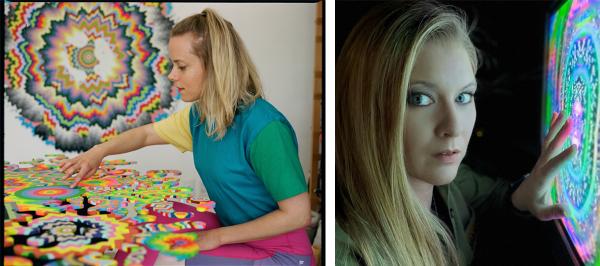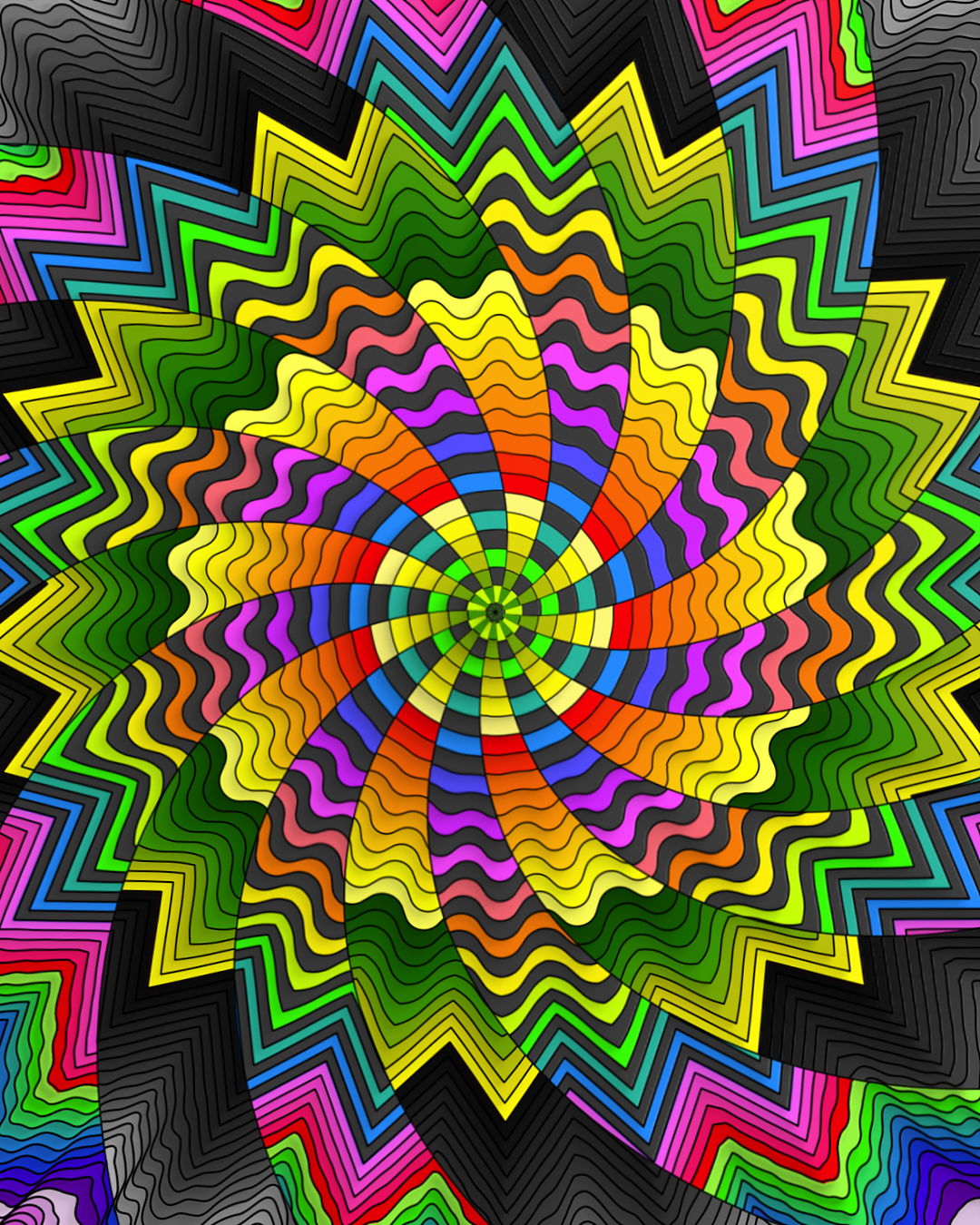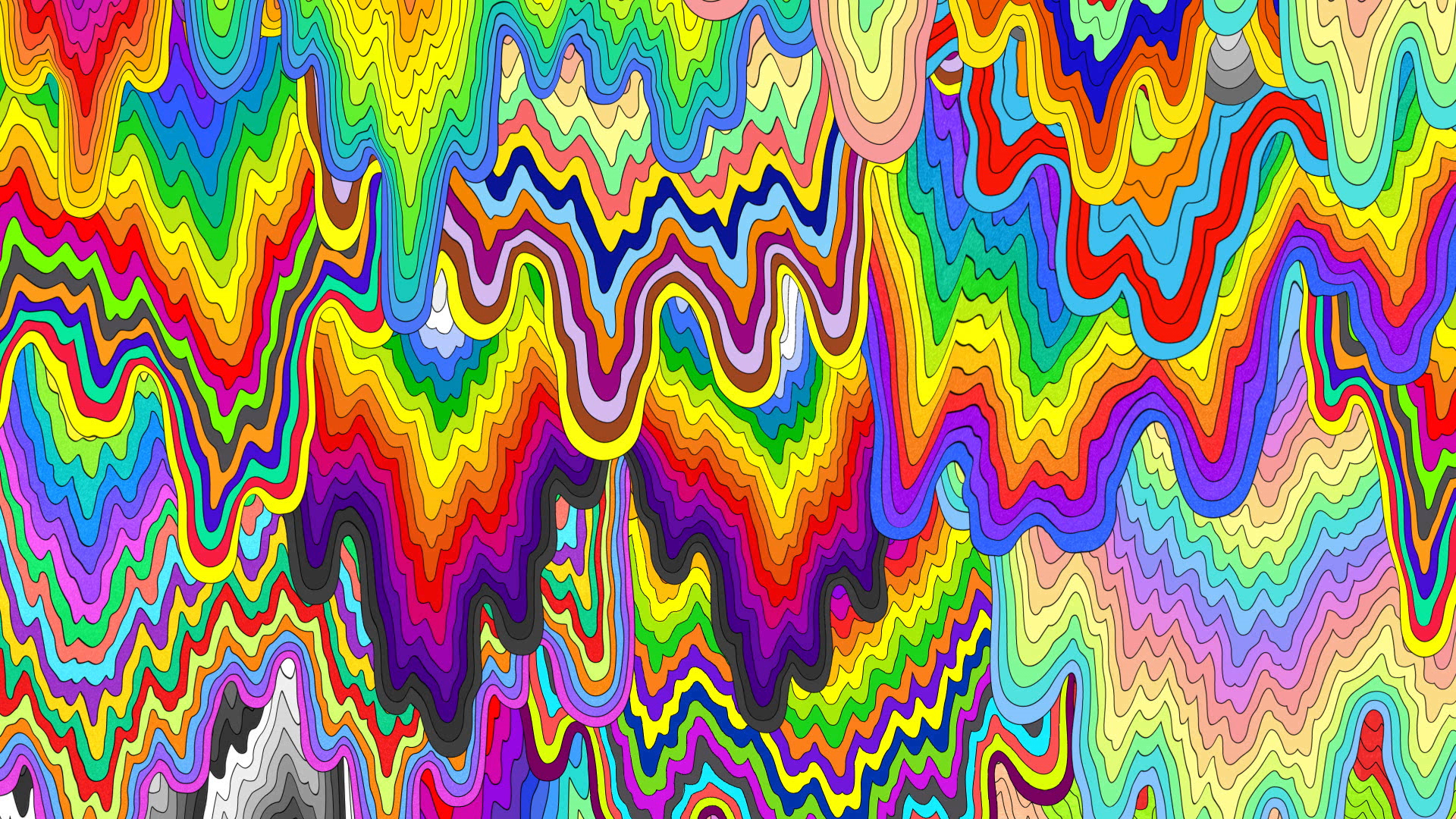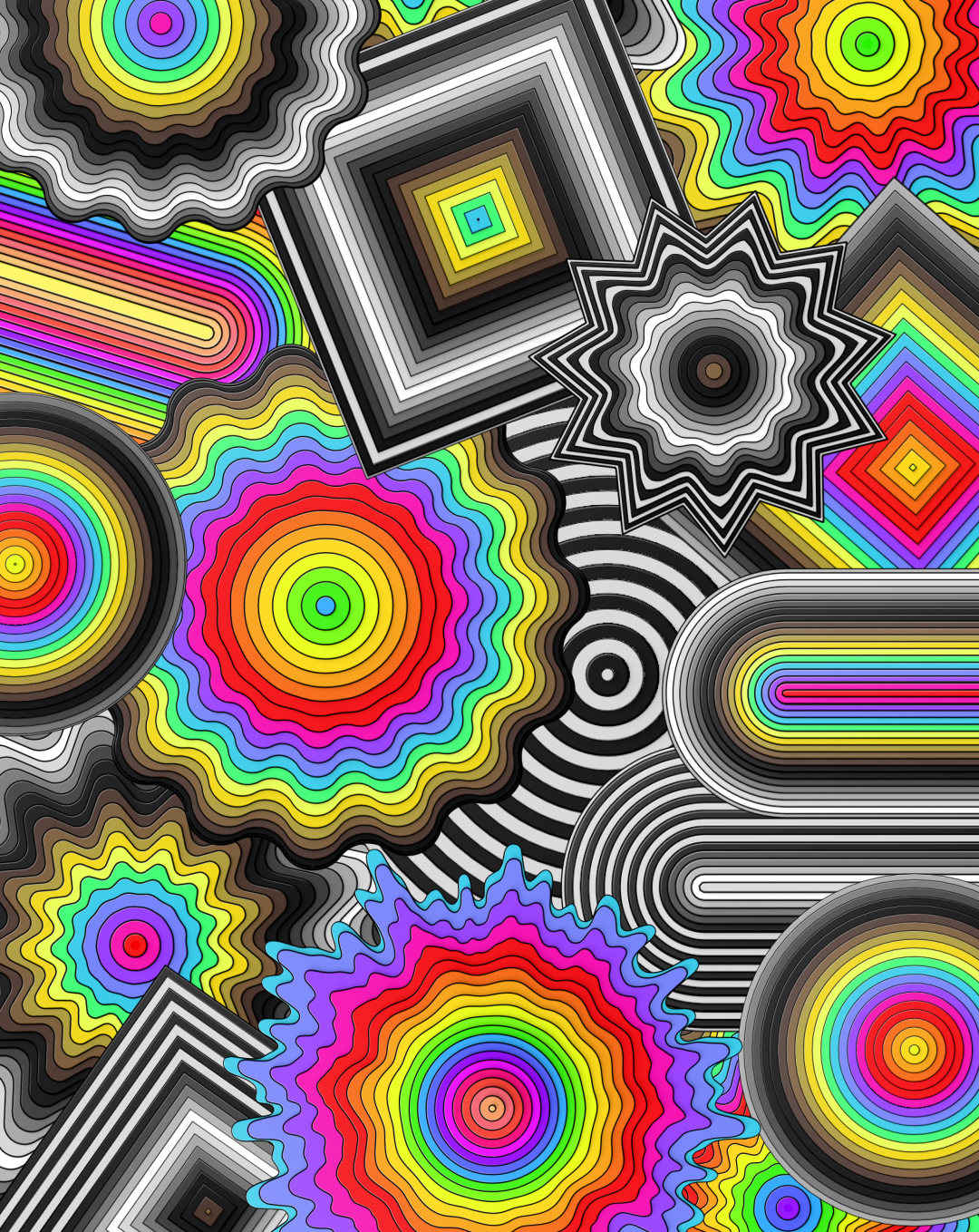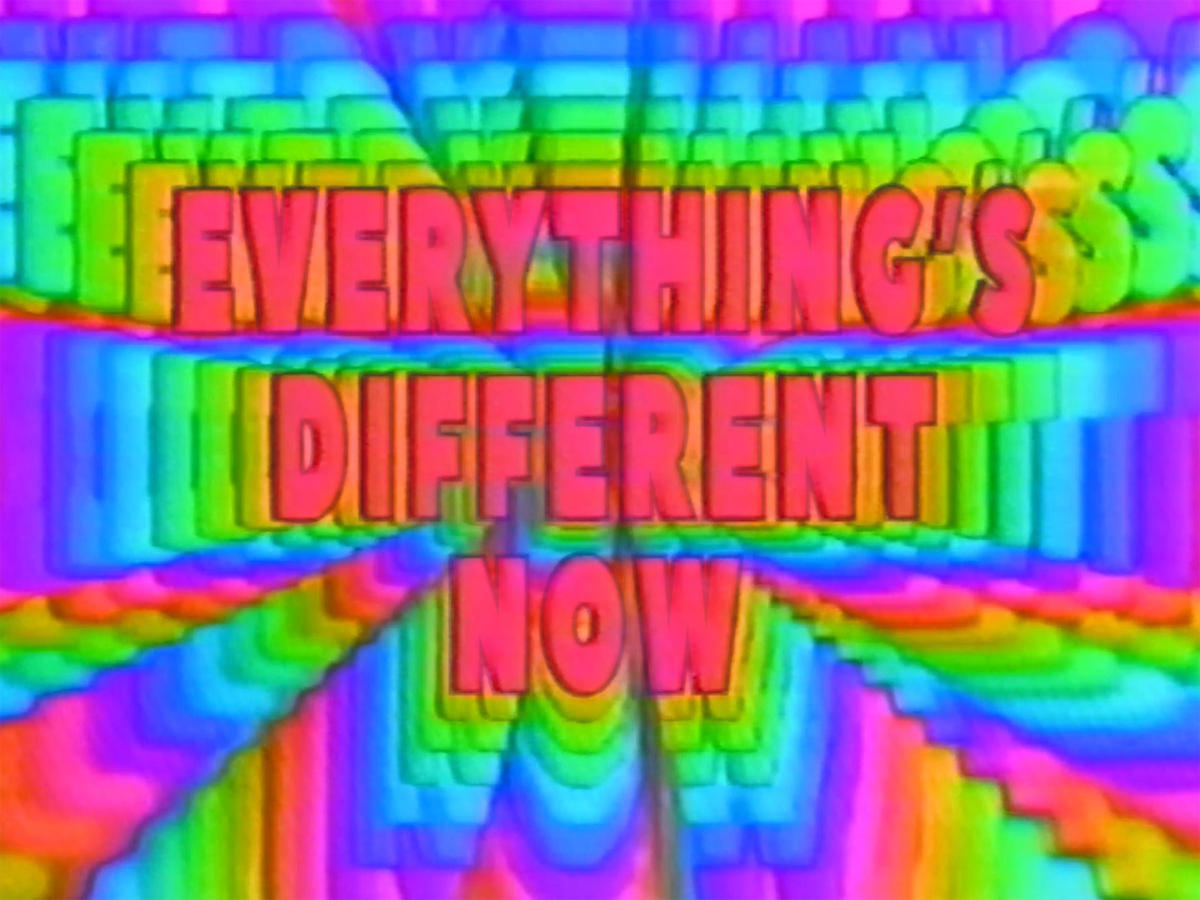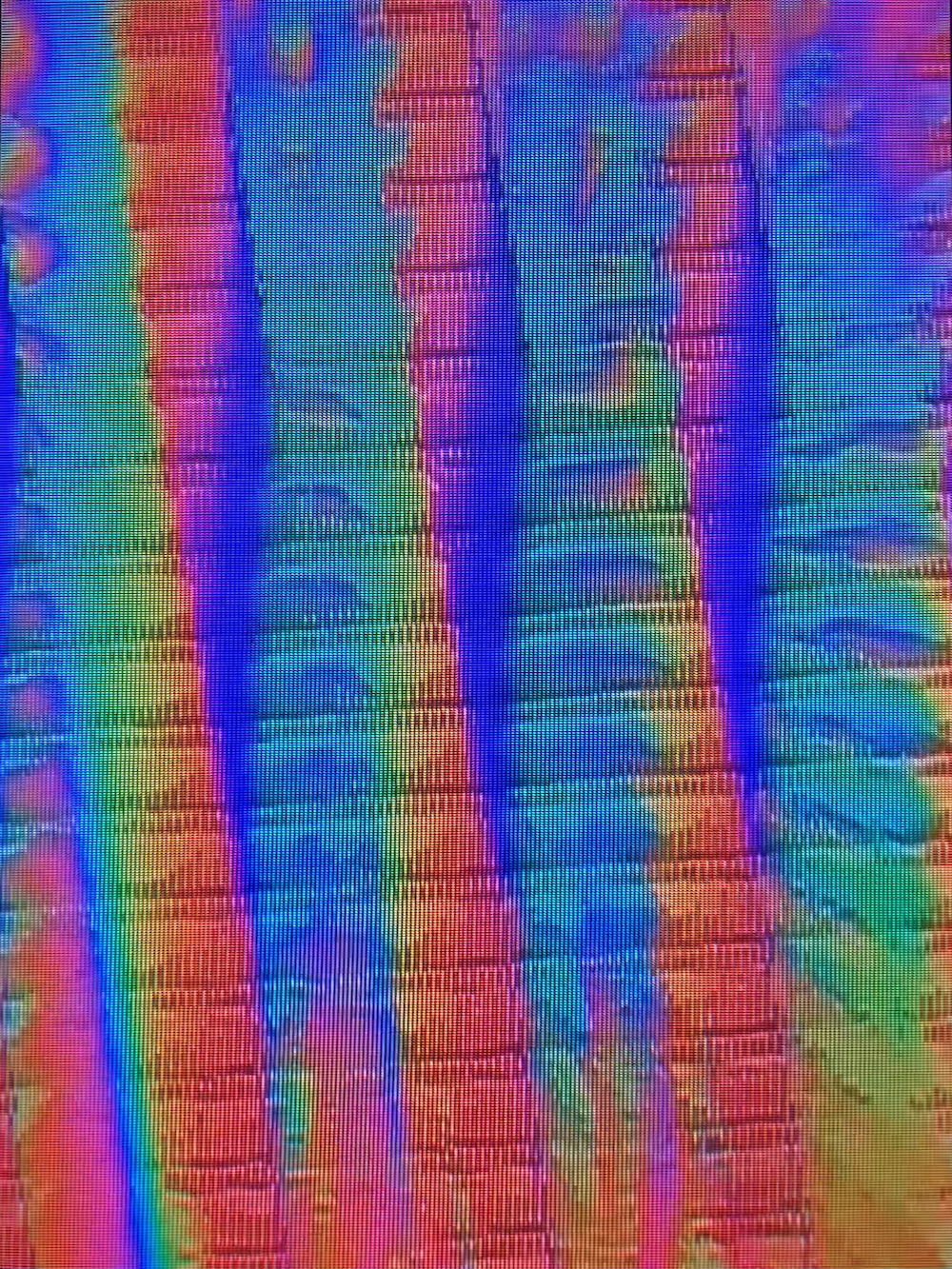LACMA’s Celia Yang, Head of Director's Strategic Initiatives, recently sat down with digital artists Jen Stark and Sarah Zucker to explore their process, the stories behind the art they currently have on view at the museum’s Stark Bar screens, and the work they are creating in dialogue with LACMA’s permanent collection for the project Remembrance of Things Future, curated and engineered by the experimental blockchain consultancy Cactoid Labs.
Building upon LACMA’s historic engagements with art and technology, Remembrance of Things Future is an invitation to travel via the blockchain back in time through the museum’s encyclopedic collection. Utilizing tools such as generative code, dynamic software, and video synthesizers, Jen Stark and Sarah Zucker, alongside other pioneering artists, have been invited to select objects from LACMA's collection and make new digital editions inspired by the museum’s holdings. Released on the blockchain in phases beginning in March 2023, a percentage of proceeds from these limited Remembrance of Things Future digital editions goes to support LACMA’s Art & Technology Lab. More information on this project can be found at lacma.cactoidlabs.io.
Jen Stark
Hi, Jen. I know you’re from Miami but have been in Los Angeles for over 10 years now. Congratulations on your new studio in Boyle Heights, the space is beautiful. Can you tell me a little about your process?
Thanks, I’m happy to have you here! Yes, I feel like a true Angelino now, and am stoked to be able to work out of my dream studio. When I’m creating, most of the time the concepts start in my sketchbook. I’ll sketch out an idea, usually just doodling and brainstorming, then when it’s fully formed, I’ll know whether the work will be physical or digital.
How long does it typically take to create your digital works?
The digital works I’ve created can take anywhere from a few days to one year to complete. (It just depends on the complexity of the project.) For the physical objects, I can create them myself from start to finish. Digital pieces actually take longer and require more collaboration. I’ll come up with the idea and bounce it off my collaborator (who specializes in coding or tech). We will then figure out what can be done and what can be changed. I draft the digital works by a sketch first then translate it on Illustrator. I’ll have all the colors laid out, like a timeline of colors, and my collaborator helps make them come to life. Everyone brings what they’re good at and their strengths to the table. It’s been pretty fun, this digital interactive immersive world.
Color and color play is obviously a central aspect to your practice.
Yes, I’m inspired by color theory and how different colors react to each other. In my paintings I’ll place neons and brights next to certain colors to make them look dull or pop out. I like how colors play games with our eyes. The mystery of rainbows and light spectrums—how so many colors of light mix together to become white. Also color in nature is either an attractant or repellent. It’s trying to get your attention to warn you of something or pull you in closer. These bright colors can say: “This is deadly, don’t come close.” Or “Come eat me, I’m a delicious red berry.” I like that dynamic with nature.
How about fractals and sacred geometries?
I’m from Miami and so I'm inspired by nature. Growing up, my parent’s backyard was so lush with all these beautiful ferns. I would stare at them and see how they unfurl, revealing the math and sacred geometry inside of them. I also love thinking about evolution: how one generation (or layer) affects the next and the next, slowly changing and evolving. There are a lot of nature and plant references in my work.
I can see root rings and systems in your work. Your art transports into a fun dimension or deep space.
Yes! And wormholes. I’m inspired by outer space and all the mysteries in the universe. I like to think about the afterlife and its connection to the psychedelic world, a cosmic soup that we all end up back inside of. I like thinking about that as our universal consciousness. Where do wormholes go? Is it a connection to another consciousness?
Can you tell me about your immersive installations? I know you have begun to do more of them in recent months.
I did a show in N.Y.C. in the summer of 2021. It was an immersive experience titled Cascade. About half of the rooms in the show were interactive. Some objects would magnetize to your body. The digital shapes treated the viewer like a magnet. There were lidars that were put into two slits in the walls and they could sense where your body was. The shapes would fall down from the wall and track to your movements. This was created with TouchDesigner, through my collaborator, CutMod. There was one room that was akin to a sound bowl that played different tones. Once the viewer walked into the room, their body was assigned a note. If there were two people in the room, there would be two different tones. To create this show in N.Y.C., we needed a big team—there were about 20 to 50 people helping make it happen. I’m excited to say we’ll be bringing this immersive installation to L.A. very soon.
There was another installation I created at Wilding Cran Gallery last summer called Digital Paint (created with the help of CutMod). We used three projectors and three walls. The work was also created with TouchDesigner and a PC. There were three lidars to track and create a forcefield wherever people touched the wall. My immersive installations all started with Wilding Cran. They let me do this installation in their space in 2018, where we projected animations inside of a small room. The black and white shapes came to life and bloomed with color and sound with your movements. Since then my interactive work has been evolving exponentially.
Let’s talk about the works on view at Stark Bar.
Drip Cascade, Multiplicity, and Mandala were all created with my collaborator David Lewandowski. They are based on meditation and the psychedelic world, going into other dimensions. Drip Cascade is a psychedelic camouflage, taking over the whole screen as a dreamscape. For Mandala, I wanted to hypnotize the viewer, create a meditation of sorts. My friend Charlie made the sound. Multiverse was the first NFT I made in 2021. The geometric shapes are the infinite bubbling of life and a dream world. Like you just licked the toad. I dropped this one on Foundation.
Can you tell us a bit about the two works in LACMA’s collection you responded to for the digital edition you’re creating?
I’m inspired by two quilts in LACMA’s collection from the mid to late 1800s. They were weaved in Pennsylvania by an unknown maker. They look almost Islamic. In college, I was a textiles fibers major but I don’t work in fabrics anymore. I usually work with animation or paper. But it’s great to come full circle with these objects and come back to textiles. The final output for the digital creation will be an animated square of colors, very similar to the patterning on the chosen textiles.
Looking forward to seeing the final pieces!
Sarah Zucker
Can you begin by describing your artistic process?
I consider my work a digital-analog hybrid and so it often begins with sketching. My more graphic work starts off with good old fashion sketching with markers on paper. Once I finish my preparations, which can take weeks or months, I undergo the very specific process of entering the content into the analog ecosystem. The work is put through an analog rig I built, of various devices: vintage broadcast devices, custom hardware, and different types of machines, some of which are older than I am. What is interesting about working with analog gear, there is no saving. I view my practice as channeling. There is symbiosis between me and the machines. The work, the decisive moment, it’s very much about what I channel in the moment. I then bring the piece to the digital ecosystem by either transferring it digitally or filming the vintage screen I used. It’s a dance between the digital and analogue and dance between prepared, thoughtful, and immediate work.
How do you go about deciding which method or which machine to use when there are so many potential outputs?
I meet chaos halfway. Once I’m there, I have intentions and plans, but then there is a degree where the medium has to inform me. I don’t know how the work I prepared digitally will translate into the analog. I’m often surprised by how it behaves once it’s in that system. I’ve gotten to know these devices so well these years, since 2015. I go in with a plan in mind and a lot of it is developing a language of color and light through these machines. I find it similar to the origins of photography. My background is in photography. A lot of it is about herding light through these circuits. The more robust or complex the creation, the more I won’t know how it’s going to behave. Sometimes my plans fly out the window. Often I make a lot of different versions and lately, the final version is usually three to six different versions I reworked and refined, going granular to getting it where I want it.
Are there any lineages in the art historical cannon that you follow or are influenced by?
Len Lye and the Whitney brothers (James and John) are huge inspirations. I fit right into the lineage of video and computer-based art. Len Lye is so painterly and that speaks to how I create. I create in four dimensions with animations that loop and feed back onto themselves. I view it similarly to how a painter views a canvas, working within the bounds of a rectangle and laying elements over each other and creating texture and color and light. I was exposed to the Whitneys, Len Lye, and Stan Brakhage in college. I went to Northwestern and the Block Museum there did a screening series of experimental video art and that was my red pill moment. I was studying screenwriting and I never thought of viewing video in an art object way. Early video art are virtual objects and that’s what I create. There’s a lot of physicality to what I do. Like many kids in the ’90s, I’ve pointed a camera at a TV and seen the feedback that explodes from that. Seeing the Whitneys’ works, I connected this idea that feedback is mystical. There are so many ancient mystical properties of art in every culture around the world referencing feedback loops. Feedback is my main defining visual motif that I use in my work.
Can you tell us about the pieces on view at Stark Bar?
Both works were created last year, 2022. It was a very transitional year. Rhapsody in Hue is in a style I call “video feelings,” very abstract expressionistic. It has an infinite DNA-like motif. It’s a statement of colors and textures that encapsulate my work. Everything’s Different Now is in a style I call “video thoughts,” taking text in a feedback loop. It’s circular logic, phrases that can be taken in many different layers of meaning. These text-based pieces incorporate feedback loops through their logic of meaning but also integrate visual feedback loops that emphasize that circular aspect. I’ve been working with the word “now” for years. The idea of the present and the idea of what is to be at the fulcrum, the center, acute point between the past and future. I was channeling the feeling I was getting from everyone I knew, what was happening in the blockchain art ecosystem but also the world, figuring out what life looks like now that covid is ending. This feeling I was getting from everyone: everything is different now. The world is a feedback loop. It’s always changing and it’s always the same. The point of the piece is that everything is different now and it always is, it’s always true.
What drew you to the works you reference in LACMA’s permanent collection for your upcoming digital edition?
The two pieces I responded to in my new edition are both about a 100 years old, give or take. That was my entry point to them. For a while now, I have had this ongoing dialogue with that point in history because I have felt it very profoundly echoes what we are going through now. I think about how the Expressionists in the 1920s were responding to the increased mechanization of the world and the increased globalness of the world after World War I. For the first time in history, we were this global entity and it was terrifying to them. That’s what pulled me into that period of time. I chose two works that are vastly different from each other in style but they shared the subject of figures. Both artworks contain two figures in dialogue with each other. Coming out of the coronavirus pandemic I, like a lot of people, have been feeling very disconnected. Being starved of real acute human connection. Those people of that time were in the exact same place. They had a pandemic and war. Yet I found both artworks to be expressions of joy. I find making work that contains joys, even if it has undertones of fear or existential dread is what’s called for in times like these. There’s a reason why we’re putting ourselves through all this terror and it’s because at the end of the day, human connection is sacred and should be celebrated.
Excited to see the works you create for the editions!



